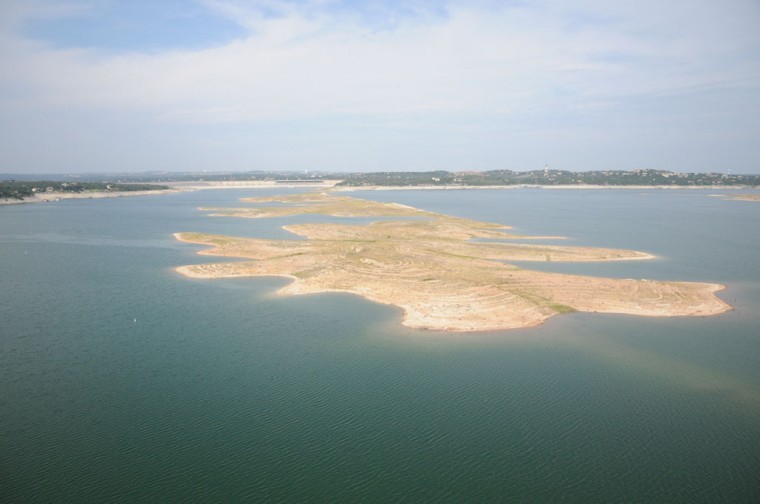Water usage restrictions replacing irrigation times on campus
The rains and flooding of superstorm Sandy recently overtook the Northeast. However, the state of Texas is facing a natural disaster just as dire, but much more silent.
Drought has become the norm rather than the exception in Texas over the last few years. In the summer of 2011, Texas faced its hottest, driest summer on record since 1895.
Although 2012 may have been a bit milder, the state, and specifically the city of Austin, is nowhere near normal water levels.
The City of Austin is currently under Stage 2 water restrictions. Stage 2 is a series of rules set forth by the city council which forbids home car washes, serving water unsolicited at restaurants, decorative fountain use and excessive lawn watering.
According to the updated Water Conservation Code, passed by the city council on Aug. 16, there are four stages of drought before reaching an “emergency response” condition.
The city council put Stage 2 water restrictions into place on Sept. 4 because the combined water level of Lake Austin and Lake Buchanan fell below 900,000 acre-feet. Under the new Water Conservation Code, if the combined lake levels falls below this line, restrictions kick in automatically.
Although students may not be drastically affected by these restrictions, many families and commercial businesses, including St. Edward’s University, had to make major changes.
This is not the first time these restrictions have been in place. ]Brian Clark Burns, assistant director of Facilities, said the university has been under Stage 2 water restrictions three times in the last five years.
Under the restrictions, residential homes and businesses are allowed only one day of watering per week. According to the City of Austin, as a commercial institution with an odd numbered address, St. Edward’s should only be able to water on Friday before 5 a.m. or after 7 p.m.
The university, however, is under a special agreement with the City of Austin known as the Alternative Irrigation Compliance Pilot Program (AICPP). As a participant in the program, St. Edward’s is allowed to water green spaces on campus according to a calculated water budget, rather than during a certain time.
St. Edward’s is one of 90 properties that will participate in the pilot program over the course of the next four years, according to the City of Austin. The goal is to see if a water budget is more efficient than the current time restrictions used for watering in times of drought.
Burns believes that the AICPP works well for the university.
“It’s good because we can apply the water necessary without having to conform to specific time frames,” Burns said.
Because the campus is so large, it is nearly impossible to water all of it during only a few hours a week .
“If we need to water the soccer field or baseball field, we’re using all of our resources on those areas,” Burns said. “Because of the demands on certain parts of campus, it makes most sense for us to use spread our resources.”
The best thing about the program is that it is as flexible as the needs of the university. Due to unpredictable weather as well as various events on campus, the physical plant can conserve water on one part of campus to water another one more thoroughly.
To determine when and how much water a particular area needs, the physical plant takes into account the species of grass and evapotranspiration levels, or levels of water in plants evaporated and transpired into the atmosphere.
“It’s sort of like us perspiring,” Burns explains. “It’s a measure of how much water needs to be replaced.”
The water restrictions have also prevented the fountain outside Main Building from running this semester.
The only way to get the fountain flowing again is if the university purchases non-potable water to fill it, as it often does for events such as homecoming.
Although the drought persists, and Lakes Travis and Buchanan are only 43 percent full according to the Lower Colorado River Authority, St. Edward’s has adapted to the Stage 2 water restrictions.
As to whether the drought will subside anytime soon, Burns claims he is not qualified to say.
“I cannot second-guess mother nature,” Burns said.







